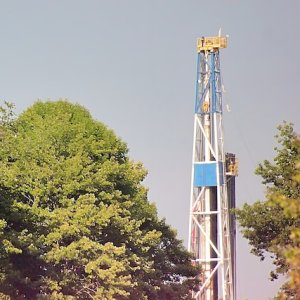
Mexico’s Geothermal Potential Remains Untapped
 By Cas Biekmann | Journalist and Industry Analyst -
Mon, 08/09/2021 - 13:04
By Cas Biekmann | Journalist and Industry Analyst -
Mon, 08/09/2021 - 13:04
In Mexico, the potential of geothermal energy always appears to be somewhat understated because hydrocarbons, wind and solar often take the limelight. By looking toward success in other countries, Mexico could begin make better use of this possibility.
Geothermal energy, in a nutshell, is heat harnessed from within the earth’s core to generate energy. People have used this heat for bathing and heating for almost as long as they have walked the earth, but technological applications aimed at producing electricity began to seriously develop after the 1960’s. Since the heat below the earth is constant, geothermal energy is a solid source of renewable power.
Mexico is aware of its geothermal possibilities: PRODESEN 2021-2035 highlights that Mexico is ranked fourth in geothermal potential worldwide. Probable and possible enthalpy, a concept used to calculate heat, lies around 10,000MW. By comparison, Mexico has over 86,000MW of total capacity installed as of 2021. Although tens of thousands of MWs sounds impressive, academic studies such as those by Iglesias et al. suggest Mexico’s capacity could be around four times that size, basing their findings on CFE surveys from the 1980s.
Up until now, Mexico has installed 951MW, coming from five operational geothermal fields: Cerro Prieto, Los Azufres, Los Humeros, Las Tres Vírgenes, and Domo de San Pedro. 97 percent of this is owned by state utility CFE, according to IEA Geothermal, although exploration permits have been granted to private companies. With CFE’s experience, the government could look to expand on this capacity, as private development is slowed down by an environment of regulatory uncertainty. Mexico has an adequate legal framework for geothermal energy too, something that technologies such as battery storage and hydrogen do not. Unfortunately, recent plans outlined by CFE Director Manuel Bartlett and President López Obrador suggest that the government is more interested in solar energy, with nuclear power being a smaller possibility.
Part of this issue could be geothermal’s levelized cost of energy (LCOE). This varies between US$0.05 to US$0.13/kWh for recent projects according to IRENA, higher than the costs associated with solar energy. Even though geothermal energy remains underrated in Mexico, other developing countries see its benefits clearly. For instance, Kenya relies for 38 percent on geothermal electricity in its energy mix, which admittedly dwarfs in comparison to Mexico. But its capacity is by far outmatched by energy demand, so the country aims to increase its capacity significantly by 2030. Geothermal energy will make up half of this predicted future capacity.
But for the time being, geothermal energy will remain under the radar. “The issue of geothermal energy has been left as one of the pending issues, after the second time commitment to natural gas. The commitment to natural gas as the main source for generating electricity has hindered the promotion of renewable energy and this is reflected in the case of geothermal energy,” said energy sector analyst Fluvio Ruiz Alarcón in 2019 to El Heraldo de Mexico. Up until 2021, this situation has barely changed.
















